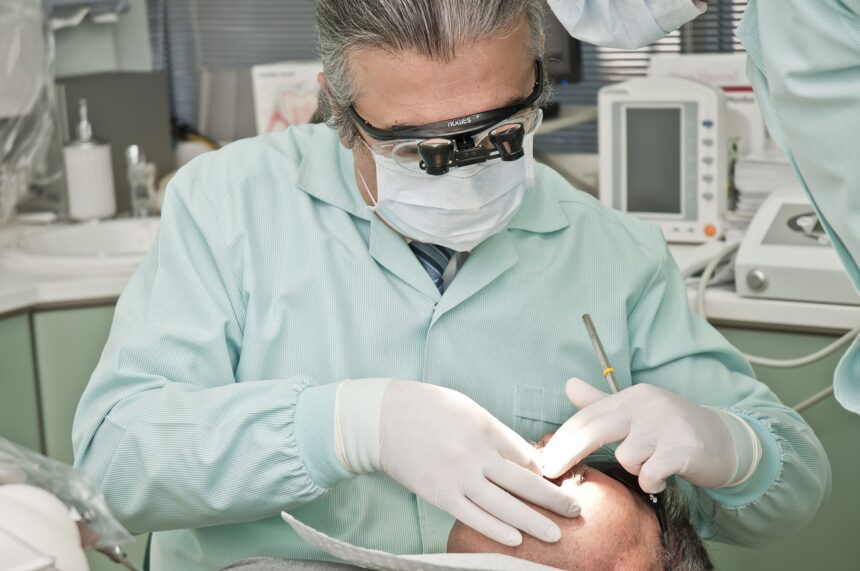Feeling anxious about going to the dentist is common, but it doesn’t have to be that way.
- Exploring Dental Phobia
- Origins and Symptoms
- Effects on Dental Health
- Technological Solutions for Dental Phobia
- Virtual Reality Applications
- Cranial Electrotherapy Stimulation Methods
- Virtual Reality Exposure Techniques
- Advantages of Using Technology in Dental Phobia Treatment
- Tailoring Care for Dental Phobia Patients
Recent studies show technology can ease dental fear. This article will explore how tech innovations are making dental visits less scary.
Exploring Dental Phobia
Dental phobia stems from past experiences and can manifest as fear, anxiety, and avoidance of dental care. Around 36% of people suffer from dental phobia.
My Princeton dentist emphasizes that these symptoms often lead to poorer oral health outcomes and hinder necessary treatment.
Origins and Symptoms
Exploring the origins of dental phobia often leads us back to negative experiences or stories that have been shared among friends and family. This fear can also spring from a sense of loss of control while sitting in the dentist’s chair, making one feel vulnerable.
Symptoms manifest as intense anxiety about dental visits, which includes feeling tense and experiencing sleepless nights before an appointment. The mere thought of going to the dentist causes significant distress for many, leading them to avoid dental care altogether.
Individuals with dentophobia exhibit a range of responses from avoiding dental checkups to experiencing panic attacks at the prospect of dental treatment. This extreme fear not only hampers their oral health but significantly impacts their quality of life.
It is essential for patients and dentists alike to recognize these signs early on to manage them effectively through various interventions.
Dental anxiety and phobia result in avoidance of dental care and is a frequently encountered problem in dental offices.
This understanding paves the way toward exploring how technological advancements offer solutions for managing such fears effectively.
Effects on Dental Health
Dental phobia often leads to the avoidance of dental care, which has serious consequences for oral health. People with severe fear of the dentist may skip regular checkups and ignore problems until they become much worse.
This neglect can result in gum disease, tooth decay, and even tooth loss. Poor oral hygiene not only affects your smile but can also have implications for overall health, including heart disease linked to gum infections.
Technology-based interventions show promise in addressing dental anxiety, especially in children, helping them maintain better oral hygiene. Adults with dental phobia also benefit as these innovations make it easier for them to undergo necessary treatments without undue stress.
Delayed dental treatment is a significant issue among those suffering from this condition; however, by integrating technological solutions into dental care practices, patients are more likely to seek out and receive timely help.
This approach aids significantly in preventing the escalation of minor issues into major health concerns.
Technological Solutions for Dental Phobia
Explore how technology offers solutions for dental phobia, including virtual reality applications, cranial electrotherapy stimulation methods, and virtual reality exposure techniques.
These innovative approaches aim to alleviate anxiety and stress, enhance patient experiences, and improve perceptions of dental procedures.
Virtual Reality Applications
Virtual reality technology offers a groundbreaking solution for managing dental phobia. By immersing patients in an immersive virtual world, it significantly reduces anxiety and pain during dental procedures.
This innovative distraction method leverages VR distraction systems, which studies have shown to effectively decrease the discomfort associated with dental treatments. Virtual reality applications serve as an attractive and age-appropriate way to engage children who experience dental anxiety, making their visit to the dentist less intimidating.
Evidence strongly supports the effectiveness of virtual reality equipment in helping individuals cope with fear and anxiety in dental offices. A systematic review confirmed that using VR not only distracts but also serves as a powerful tool in pain and anxiety management for patients undergoing dental care.
This approach allows patients to escape into peaceful scenarios while receiving treatment, transforming their perception of dentistry into a more positive experience. Through this advanced technological solution, dentists can offer innovative solutions aimed at improving patient comfort and reducing stress related to dental procedures.
Cranial Electrotherapy Stimulation Methods
Cranial Electrotherapy Stimulation (CES) is a safe and effective method used in managing dental anxiety. CES, delivered through devices like Alpha-Stim, significantly reduces patients’ anxiety levels during dental procedures.
It serves as a low-cost complementary treatment with relaxation therapy to alleviate dental phobia and create a more relaxed experience for patients seeking dental care. Additionally, CES has been found to be effective in treating clinical disorders such as insomnia, making it a versatile tool for anxiety management.
Cranial Electrotherapy Stimulation has been shown to drastically reduce anxiety levels in dental patients, offering a safe and cost-effective means of enhancing the overall patient experience.
Virtual Reality Exposure Techniques
Virtual reality exposure therapy utilizes VR technology to create a highly realistic three-dimensional (3D) virtual environment, helping patients escape the real world during dental procedures.
This non-invasive treatment has shown effectiveness in reducing anxiety and phobias related to dental procedures, providing an alternative method for managing dental fears. VR distraction systems have also demonstrated promising results in controlling fear and anxiety during dental treatments, making it a valuable tool for enhancing patient comfort and overall experience.
Moving on from “Virtual Reality Exposure Techniques,” let’s delve into the advantages of using technology in managing dental phobia.
Advantages of Using Technology in Dental Phobia Treatment
Using technology in dental phobia treatment reduces anxiety and stress, enhancing patient experiences. It also improves the perception of dental procedures, making them less daunting for patients.
Anxiety and Stress Reduction
Technology, such as virtual reality (VR) therapy and relaxation techniques, actively reduces anxiety in dental patients. For instance, immersive VR experiences have been proven to lower stress levels and improve the overall perception of dental procedures.
This innovative method helps in managing dental phobia by providing distraction therapy, thereby reducing anxiety for patients undergoing treatment. Additionally, these stress management tools not only alleviate fears but also enhance patient pain management during various dental procedures.
Implementing cutting-edge technology like Cranial Electrotherapy Stimulation (CES) methods has significantly contributed to reducing anxiety levels amongst dental patients. By incorporating this form of stress reduction therapy with devices like the Alpha-Stim unit, notable advancements have been made in calming dental phobia within anxious individuals.
These advancements serve to tailor care for those experiencing heightened anxieties associated with their oral health treatments while enhancing the patient experience through effective anxiety reduction strategies.
Enhanced Patient Experiences
Dental technology creates a brighter, more comfortable environment for patients. Virtual reality (VR) effectively reduces dental anxiety, enhancing patient comfort during treatment. Studies support the effectiveness of technology-based interventions in treating dental anxiety, leading to more positive patient experiences.
Patients frequently report reduced stress and increased comfort when utilizing virtual reality therapy during their dental procedures. The calming effects of this technology contribute to improved patient satisfaction and a more comfortable treatment environment.
This advancement in dental care not only reduces anxiety but also elevates the overall experience for patients seeking technology-assisted dental phobia treatment.
Moving forward to “Tailoring Care for Dental Phobia Patients,” let’s delve into how trauma-informed practices are being implemented with innovative solutions in biomimetic dentistry.
Improved Perception of Dental Procedures
Virtual reality (VR) technology has been increasingly utilized in the dental setting to improve patients’ perception of procedures. Through VR distraction systems, patients can immerse themselves in a virtual environment, effectively reducing anxiety and enhancing their overall experience.
Studies have shown that this technology not only provides subjective comfort for patients but also objectively lowers stress levels during various dental treatments. With these advancements, dental care is becoming more patient-centered, focusing on creating a comfortable and positive atmosphere for individuals with dental phobia or anxiety.
This approach demonstrates how technology is revolutionizing the field of dentistry by prioritizing patient comfort and perception.
The integration of virtual reality as a tool for managing dental phobia aligns with the goal of improving patient experiences while undergoing treatment. By leveraging technological solutions such as VR applications, dentists can address the emotional aspect of dental care and promote a more relaxed and less intimidating environment for their patients.
As a result, individuals who previously dreaded visits to the dentist may now perceive these experiences in a more favorable light, contributing to an overall shift towards positive perceptions of dental procedures.
Tailoring Care for Dental Phobia Patients
Tailoring care for dental phobia patients involves implementing trauma-informed practices and utilizing innovations in biomimetic dentistry. To learn more about these individualized approaches, continue reading on.
Implementing Trauma-Informed Practices
Trauma-informed care is essential for creating a compassionate and personalized approach to address dental phobia. It involves proper patient evaluation to understand the source and level of anxiety, guiding the treatment plan for managing dental phobia patients.
In addition, trauma-informed practices help dental staff adopt flexible approaches and work collaboratively with survivors, supporting them through their difficulties with treatment. This framework underpins a tailored and survivor-centered care model, ensuring that each patient’s unique needs are recognized and addressed with empathy.
Innovations in Biomimetic Dentistry
Biomimetic dentistry embraces advanced technology to replicate natural teeth, providing minimally invasive and pain-free restorative treatments. By using materials that mimic the properties of natural teeth, such as composite resins and ceramics, biomimetic dentistry helps maintain healthy tooth structure while enhancing patient comfort during procedures.
This innovative approach not only reduces dental anxiety but also promotes long-term oral health by preserving more of the natural tooth structure compared to traditional methods. Biomimetic techniques aim to restore teeth in a way that fully integrates with patients’ natural oral functions, ensuring a more comfortable and stress-free experience.
Innovative dental technology enables dentists to implement tailored care plans for patients with dental phobia, addressing their unique needs with precision and compassion. By combining advanced technology with trauma-informed practices, biomimetic dentistry strives to provide painless and comfortable treatment experiences for individuals who struggle with dental anxiety or fear.
Minimizing discomfort during procedures through biomimetic approaches contributes to shifting the paradigm towards a more patient-centered and empathetic model of dental care.
Case Studies and Patient Outcomes
Transitioning from innovations in biomimetic dentistry to a focus on case studies and patient outcomes, it is evident that managing dental phobia through technology yields positive results.
For instance, tailor-made web-based interventions have shown promising potential for reducing anxiety levels in patients. Furthermore, virtual reality (VR) has been notably effective in distracting and calming individuals with dental phobia before treatment.
Additionally, a case series analysis suggests the optimization of cooperation among adult patients with varying degrees of anxiety when utilizing a patient-centered model.
Implementing these technological solutions can lead to improved patient outcomes and greater cooperation during dental treatment. Virtual reality exposure therapy (VRET) has been found feasible for treating dental phobia while enhancing patient experiences.
Notably, managing dental phobia in both children and adults through the application of technology offers significant benefits by addressing their specific needs and fears. Ultimately, this tailored care approach empowers patients to navigate their dental anxiety successfully with reduced stress levels and enhanced perceptions of dental procedures.
Conclusion
Utilizing technology to manage dental phobia and anxiety has revolutionized the patient experience. Virtual reality, laser dentistry, and IV eyewear are just a few of the innovative tools transforming dental care.
These technologies not only reduce anxiety but also empower patients to take control of their oral health journey. By tailoring care with advanced techniques, dentists can create personalized treatment plans that cater to each individual’s specific needs.
Technology is shaping a new era in dental practices and paving the way for more comfortable, less anxious visits for patients.







